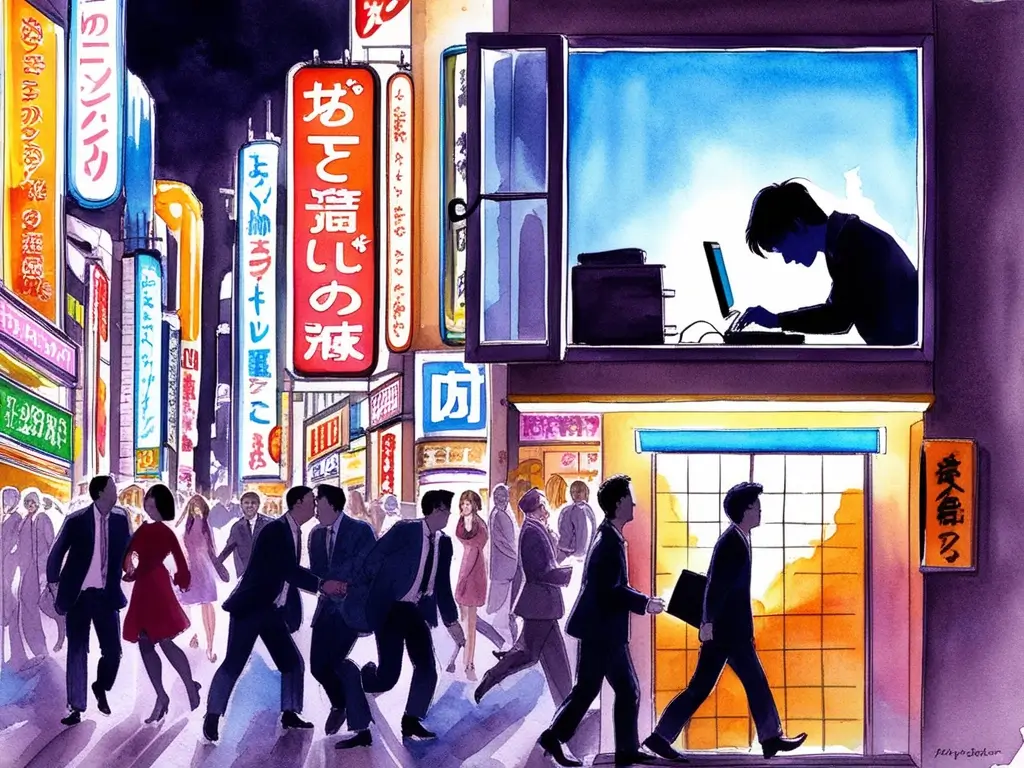Hikikomori in Japan is a term that describes people who isolate themselves from society for over six months. Recent studies estimate over one million individuals fall into this category, and the true number may be even higher. This phenomenon highlights deep cultural and economic challenges as Japan grapples with an aging population, competitive pressures, and increasing loneliness. Understanding Hikikomori isn’t just about recognizing those affected—it’s about addressing a growing societal issue that impacts families, communities, and the nation as a whole.
What is Hikikomori?
The term “Hikikomori” refers to individuals in Japan who choose to withdraw from society, shutting themselves inside their homes for prolonged periods. This phenomenon extends beyond temporary solitude, reflecting deeper social, psychological, and cultural implications. Let’s break it down to understand this issue better.
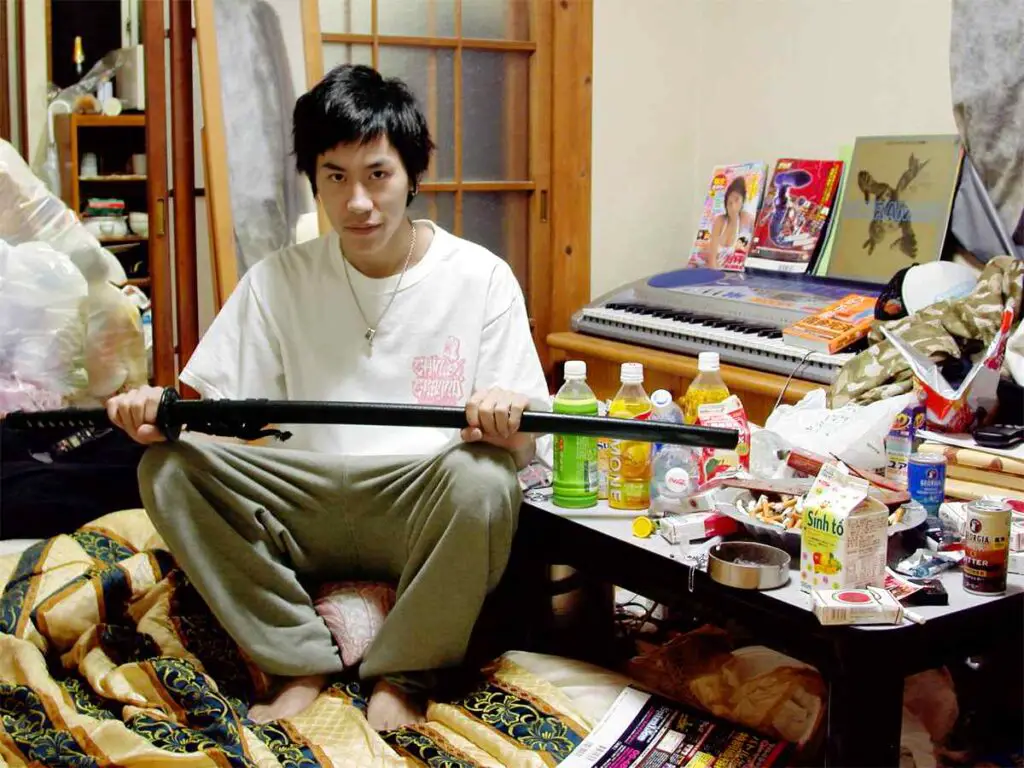
Definition and Key Traits
The Japanese Ministry of Health, Labour, and Welfare defines Hikikomori as people who isolate themselves at home for more than six months, showing a lack of interest in work, education, or social interactions. Notably, this condition occurs without co-existing psychosis or significant mental health disorders. The traits defining Hikikomori include:
- Rarely leaving their home or rooms.
- Avoiding face-to-face contact, even with family.
- Reluctance or refusal to participate in work, school, or community activities.
This definition underscores that Hikikomori is not simply introversion or laziness but a severe reaction to societal expectations and pressures. For additional insights into its medical and cultural framing, you can explore resources like the Japanese Cabinet Office’s report or detailed analyses published on Wikipedia’s Hikikomori page.
Prevalence in Japan
Hikikomori is a widespread issue in Japan, affecting a significant portion of the population. Recent studies estimate that approximately 1.2% of the Japanese population has experienced Hikikomori in their lifetime. For young adults aged 15 to 39, this represents about 541,000 individuals at any given time. However, the issue is not confined to younger generations alone. A growing number of middle-aged and even elderly individuals are now categorized as Hikikomori, reflecting shifting societal pressures.
A nationwide survey conducted in 2023 suggested a slight increase in prevalence post-COVID, with nearly 2% of people aged 15 to 64 identifying as Hikikomori [Source]. Awareness and research are improving, but many cases remain undetected due to family stigma or lack of outreach. If you’re curious about the depth of this issue, check out this comprehensive research from PMC.
Understanding and addressing Hikikomori requires acknowledging its complexities. Families, communities, and policy-makers must come together to find compassionate solutions that resonate with individual needs while dismantling societal pressures contributing to isolation.
Cultural and Societal Factors Behind Hikikomori
Hikikomori, a term deeply intertwined with Japanese culture, isn’t just about isolation. Its roots are embedded in societal norms, education, and economic struggles. Examining these factors provides insight into why so many in Japan retreat from the world.
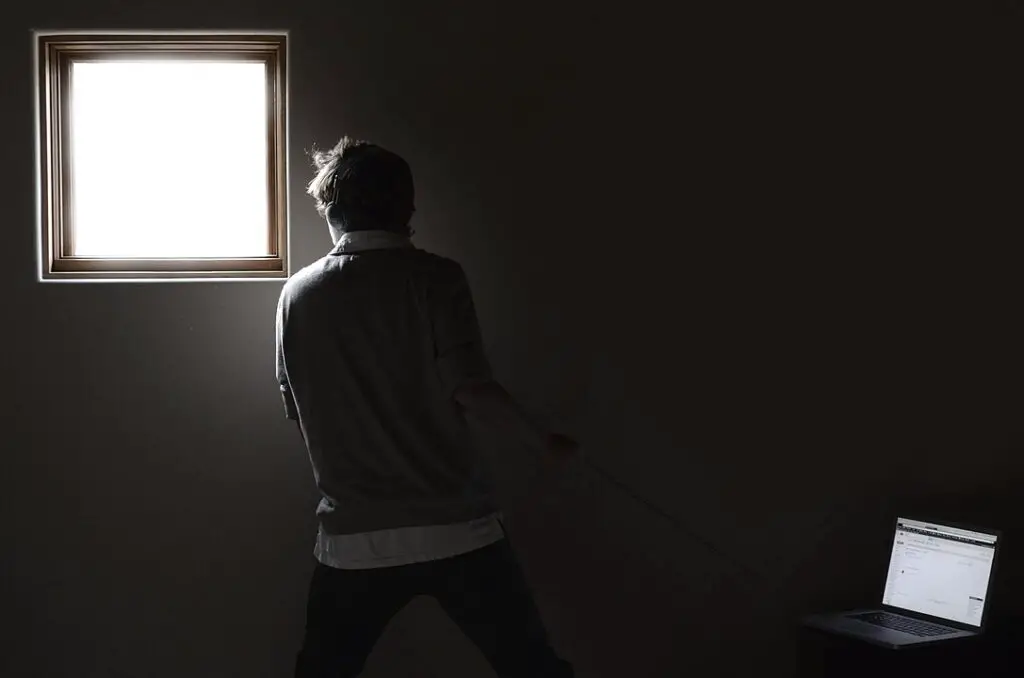
Role of Societal Expectations
Japan has a long-standing tradition of placing immense emphasis on success and social conformity. Expectations often begin at a young age, with children taught to respect hierarchical norms and prioritize group harmony over individual expression. While these values create strong social cohesion, they can also lead to overwhelming pressure.
- Success Equals Self-Worth: In many cases, individuals feel their personal value is tied directly to achievements. This perception can make failure unbearable and deeply isolating.
- The Weight of Conformity: Those who don’t “fit the mold” may feel alienated. For some, remaining unseen becomes preferable to enduring judgment or rejection.
This cultural backdrop creates a cycle: the inability to meet societal expectations fosters feelings of inadequacy and shame, which often push individuals toward withdrawal. For more background on cultural factors influencing hikikomori, you can explore research on the Japanese societal framework.
Impact of Education System
Japan’s education system is known for its rigid structure, discipline, and intense competition. Students often face what is colloquially known as “exam hell,” a relentless cycle of testing and studying to secure entrance into prestigious schools and universities.
- Parental and Peer Pressure: Many students face enormous expectations from families to excel academically, leading to stress and burnout.
- Limited Creative Outlets: The system often prioritizes rote learning over individuality, leaving less room for self-expression or creativity.
As students struggle under this pressure, those who fall behind academically may feel stigmatized. Over time, this stigma can lead to school refusal or social withdrawal. Insights into these challenges can be found in this analysis of the Japanese education system and social withdrawal.
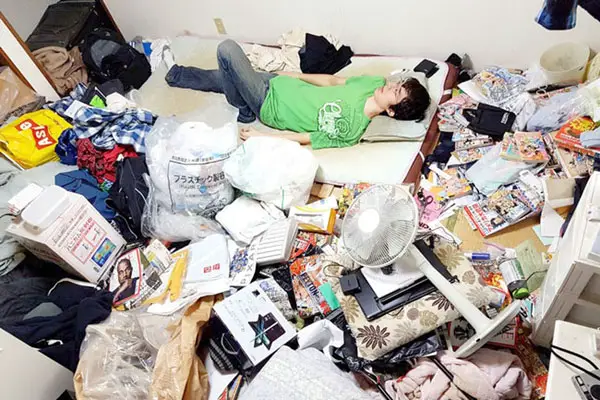
Economic Challenges
Japan’s economic stagnation over the past few decades has further exacerbated the issue. With a decline in lifetime employment stability, younger generations face an uncertain future. The high cost of living in urban areas and shrinking labor market make finding stable jobs challenging.
- Lost Generation: Many individuals who came of age during the 1990s economic bubble collapse faced limited job opportunities, leading to lifelong insecurity.
- Employment Insecurity: Contract jobs and part-time work have replaced stable, long-term employment for many, undermining financial independence and self-esteem.
These economic realities add another layer of difficulty in rejoining society for those who choose isolation. To understand this further, you can look into the economic factors linked to hikikomori.
By addressing cultural norms, education pressures, and economic struggles together, Japan can begin to create a society that supports individuals before they feel compelled to withdraw entirely.
Psychological and Familial Factors
Hikikomori is not just a societal dilemma; it is deeply rooted in psychological and familial dynamics. Understanding these factors helps us uncover why some individuals retreat from society for years or even decades.
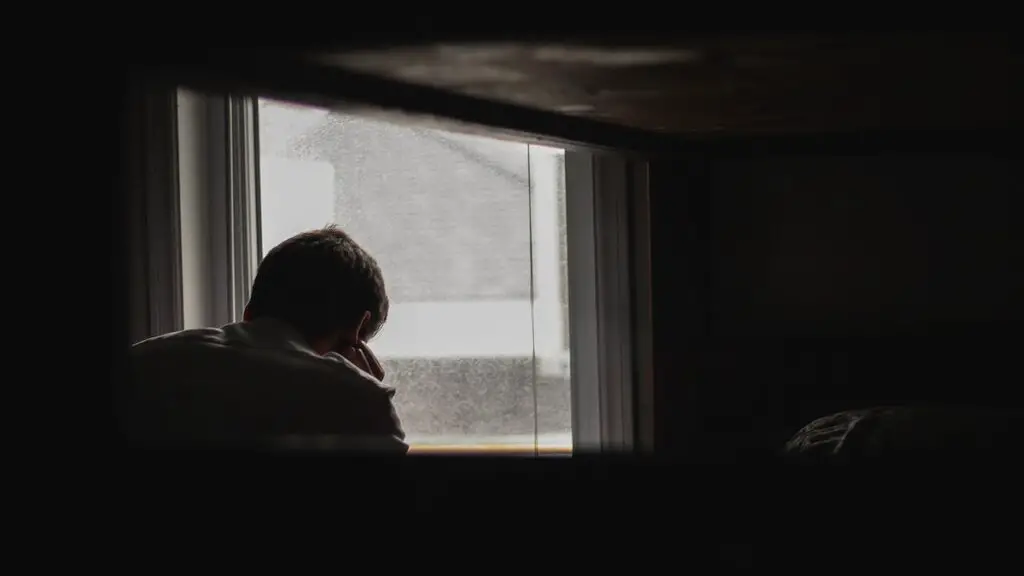
Mental Health Connections
Hikikomori often intertwines with mental health challenges such as depression, anxiety, and autism spectrum disorders (ASD). Depression and anxiety can foster feelings of unworthiness and an inability to engage with the world, creating a self-reinforcing cycle of isolation. Similarly, individuals on the autism spectrum may struggle with social norms and expectations, making withdrawal a form of coping.
Recent studies suggest up to 54.5% of Hikikomori cases also involve psychological conditions, highlighting a significant overlap [Source]. These findings are critical in recognizing that Hikikomori is not just a cultural phenomenon but often a manifestation of unmet mental health needs. You can find a discussion about the relationship between ASD and Hikikomori in this study on comorbidities.
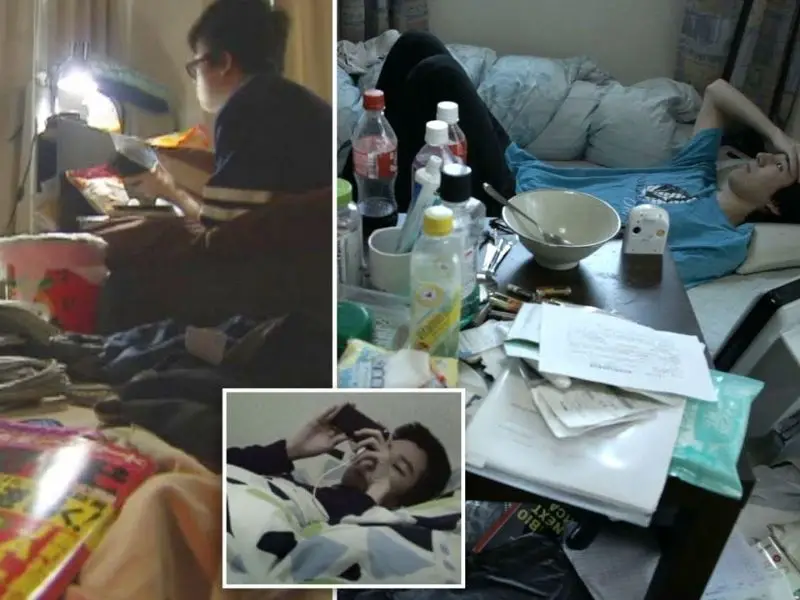
Family Support and Dependency
The family environment plays a pivotal role in both the development and persistence of Hikikomori. In many cases, overprotective parenting fosters dependency, leaving individuals ill-prepared for the demands of adulthood. Parents who fail to encourage independence may unwittingly enable prolonged isolation.
Key contributors include:
- Emotional Overprotection: Some parents shield children from challenges, creating barriers to resilience and self-sufficiency.
- Economic Enabling: Parents who provide financial and logistical support indefinitely make it easier for Hikikomori to persist.
Moreover, societal expectations for conformity often trickle down into family dynamics. Families may avoid seeking help due to stigma or shame. For those interested in the psychological role of parenting styles, this insightful article outlines how overbearing parenting can exacerbate withdrawal tendencies.

The ’80/50 Problem’
Japan faces a unique challenge known as the “80/50 Problem,” where aging parents in their 80s care for middle-aged Hikikomori children in their 50s. This situation creates enormous emotional, physical, and financial strain on families. Parents, often with fragile health themselves, struggle to provide for reclusive children who may be unable—or unwilling—to reenter society.
In the long term, these dependencies can lead to heartbreaking outcomes, such as cases where elderly caregivers pass away, leaving their dependents unable to cope. This issue isn’t just a private family matter; it’s a national concern. If you’d like to explore the wider implications, take a look at this comprehensive analysis.
Understanding these psychological and familial factors is vital for unraveling the complex web of Hikikomori in Japan. Whether through addressing mental health needs, fostering independence, or tackling the burden of aging caregivers, these insights provide a clearer path toward meaningful solutions.
Modern Technology and Hikikomori
The rise of Hikikomori in Japan is closely linked with the advancements in modern technology. While digital tools provide means to connect, they also create opportunities for isolation. Technology plays a pivotal role in influencing the behaviors of socially withdrawn individuals. Let’s examine its dual impact.
Online Communities and Gaming

Photo by cottonbro studio
For many Hikikomori, the internet offers a sanctuary. Social media platforms and online gaming communities provide a space to interact without the traditional pressures of face-to-face communication. It can feel like a lifeline—a place where they can be present and engage, but on their own terms. However, this comes with a darker side.
- Escape or Engagement? Online platforms allow Hikikomori to avoid uncomfortable social situations while still feeling marginally connected. But this often deepens their isolation from real-life relationships.
- The Role of Gaming: Gaming, especially multiplayer games, allows for a sense of achievement and interaction. Yet excessive gaming has been linked to behavior patterns similar to Internet Gaming Disorder (IGD), which often overlaps with Hikikomori. Research suggests Hikikomori individuals who play games excessively are prone to longer periods of withdrawal [source].
This digital pattern often creates a feedback loop. As their reliance on the virtual world increases, the desire or ability to participate in traditional social environments decreases. Tragically, the very tools meant to connect people can isolate them further. Insights into these mechanisms can be explored in depth here.
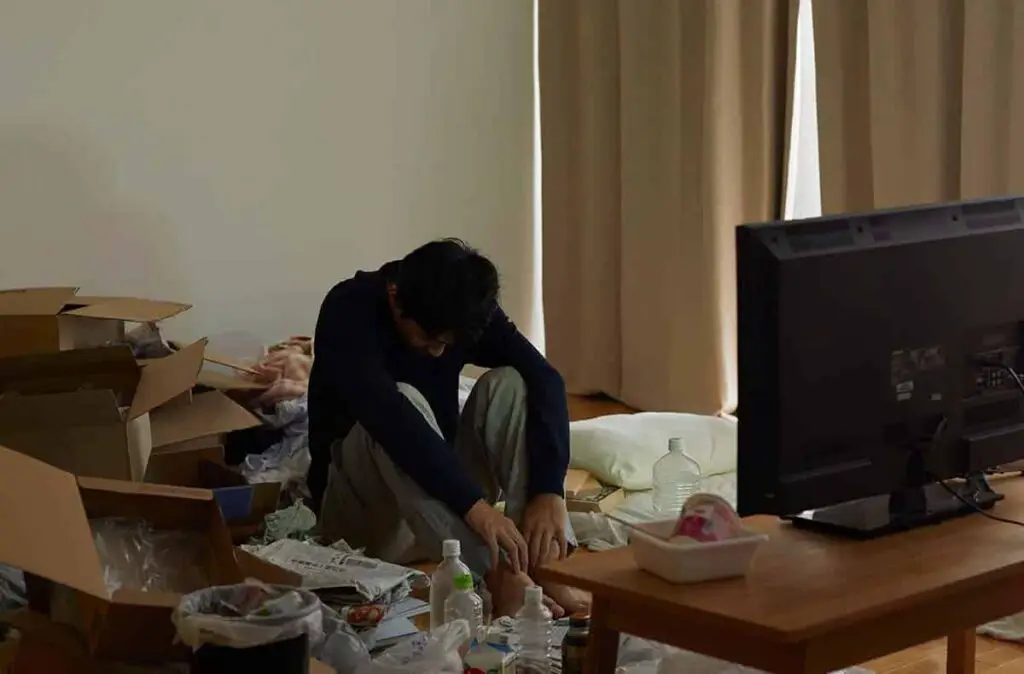
Technology as a Double-Edged Sword
Technology has transformed human communication, making it more accessible than ever before. Messages can be sent in seconds, and video calls allow face-to-face interactions no matter the distance. But for Hikikomori, this technological advancement is a paradox. It serves as both a bridge and a barrier.
- Aiding Communication: Virtual communication platforms like LINE or Zoom allow Hikikomori to maintain contact with family or friends while avoiding in-person interaction, which can seem overwhelming or anxiety-inducing.
- Deepening Disengagement: On the flip side, reliance on technology can encourage avoidance. Instead of addressing personal or psychological barriers, gadgets become a cloak to hide behind.
Studies show that prolonged use of digital tools can magnify pre-existing tendencies toward social withdrawal. This is particularly true in the case of smartphones, which make solitude more comfortable and easier to justify. For a more detailed understanding, check out this analysis on technology’s role in reinforcing Hikikomori tendencies.
The central question remains: Is technology helping or hurting Hikikomori? The answer depends on how it’s used. As a tool for gradual reintegration into society, it holds promise. However, when used as an escape, it can entrench isolation further. Balancing its use requires awareness and support from family, friends, and mental health professionals.

Interventions and Support Systems in Japan
While Hikikomori is a complex societal issue, Japan has initiated various intervention strategies and support systems. These efforts include government programs, nonprofit organizations, and innovative therapeutic approaches to reintegrate those who isolate themselves.
Government Initiatives
In recent years, the Japanese government has rolled out targeted initiatives to address Hikikomori. One prominent effort is the Hikikomori Support Project, created by the Ministry of Health, Labour, and Welfare. This program has established 85 regional support centers that provide counseling, vocational training, and community engagement activities for individuals and families. These centers serve as a lifeline for those struggling with prolonged isolation.
The government has also funded local programs aimed at better identification and early intervention. Through outreach campaigns and “5-day Hikikomori interventions” read more, officials help families connect with professionals who specialize in reintegrating Hikikomori individuals into society. Collaborative efforts between local authorities and mental health experts are improving access to essential support channels.
Community and Nonprofit Support
Local communities and nonprofits play a pivotal role in addressing Hikikomori. Organizations like Sodateage focus on bridging the gap between isolated individuals and society by offering job training programs and social reintegration services. Their efforts often target youth aged 15–39, helping them regain independence and rediscover a sense of purpose learn more here.
Additionally, community support groups organize outreach events and safe spaces, encouraging social interactions and peer support. For instance, the Hikikomori Community Support Center, found in neighborhoods across Japan, offers tailored consultations for both individuals and their families source. These grassroots initiatives often succeed where larger government programs fail by creating trust at the local level.

Innovative Therapies like Hito Refresh Camp
Innovative approaches like the Hito Refresh Camp aim to reintegrate individuals in more immersive and nurturing environments. Set in the remote hills, away from urban pressures, this program provides a unique mix of community living, outdoor activities, and therapy. Participants cook, farm, and engage in group activities that gently transition them toward reintegration learn more.
The camp offers a stark contrast to the isolation of Hikikomori. By focusing on simple, routine-building tasks and fostering human connections, these programs help participants begin to rediscover self-worth and motivation. Beyond therapy, this environment allows individuals to recalibrate socially at their own pace—without judgment or pressure.

Photo by Timur Weber
Role of Family Interventions
Families are a crucial part of addressing Hikikomori. Programs such as the Community Reinforcement and Family Training (CRAFT) method educate families on effective ways to support loved ones without enabling isolation. Through workshops and counseling, families learn to set boundaries, encourage gradual social exposure, and foster resilience.
A noteworthy intervention is the 3-Day Family Program based on mental health first aid principles source. This initiative provides tools to help families engage productively, creating a healthier emotional environment. By equipping caregivers with strategies to communicate and connect, these interventions strengthen the recovery journey.
Options for Remote Counseling
Remote counseling is emerging as a flexible option for supporting Hikikomori individuals, especially those hesitant to leave home. Internet-delivered cognitive therapy has shown promise in improving anxiety and promoting gradual social exposure. A recent case study demonstrated the success of such therapies for addressing underlying issues like social anxiety disorder accessible study.
While remote options are convenient and less intimidating, they come with limitations. Lack of physical presence can hinder the ability to build deep trust or address root causes effectively in some instances. However, many see it as a stepping stone for those resistant to traditional, in-person therapy.
By combining these interventions with compassion and persistence, Japan is taking meaningful steps toward helping its Hikikomori community reintegrate into society.
Global Implications of Hikikomori
Hikikomori may have originated as a culturally specific term in Japan, but isolation and social withdrawal aren’t confined by borders. Across the globe, there are cases that mirror Hikikomori-like behaviors, though they might be understood through different lenses. In recent years, global disruptions like the COVID-19 pandemic have further highlighted how vulnerable we all are to similar patterns of withdrawal.
International Cases and Comparisons
While Hikikomori is most recognized in Japan, it’s no longer exclusive to the country. Experts have documented similar cases in various nations, often under different names or with cultural adaptations. How do these compare?
- Italy: Youth in Italy have shown behaviors remarkably close to Hikikomori, characterized by long-term withdrawal from social engagement. A clinical case study described a 29-year-old who secluded herself for seven years. Such examples showcase how similar patterns emerge in settings with high societal expectations. More on Italy’s Hikikomori-like cases here.
- Spain and Ukraine: An analysis of social withdrawal in these regions outlined parallels between their youth populations and Japan’s Hikikomori phenomenon. Despite differing societal structures, the outcome—a population isolating themselves at home—remains shockingly alike. Explore international studies about Hikikomori here.
- Global Perspective on Prevalence: A meta-analysis highlighted how Hikikomori symptoms are detected in countries such as the United States, South Korea, and China. While cultural contexts shape the manifestation, the similarities point to a universal challenge of dealing with modern social pressures. If you’re curious about the prevalence of Hikikomori worldwide, you can check this international study.
Isolation is not merely a geographical issue. Different triggers may exist—cultural stigma, competitive pressures, or even economic instability—but the core symptoms remain consistent. These cases underline the universal nature of human struggles with societal expectations and mental health.
Impact of COVID-19 on Isolation
 Photo by Mikhail Nilov
Photo by Mikhail Nilov
The COVID-19 pandemic was an unprecedented modern disruption, forcing billions into isolation. While necessary for public health, lockdowns and distancing measures created a perfect storm for fostering social withdrawal.
- Loneliness Surge: Research has shown many experienced greater loneliness during COVID-19. Without the usual rhythm of life—work, school, or community gatherings—people of all ages reported feelings of disconnection. Studies during the pandemic revealed sharp rises in depression and anxiety. Read about the connection between COVID-19 and isolation.
- The Domino Effect: Social isolation isn’t just temporary. For some, the post-pandemic shift back to “normal” feels impossible. Routines lost during quarantine made reintegration harder, amplifying issues many were already coping with before the outbreak. A similar trend has been observed with withdrawal patterns, sometimes echoing Hikikomori behaviors. Analysis on the prolonged effects of isolation during COVID-19.
- A Global Mirror: COVID-19 pushed people across continents into circumstances that revealed the fragility of our social frameworks. In this way, the Hikikomori phenomenon offers a lens into how societal expectations and external pressures—whether caused by a virus or cultural norms—can create similar outcomes anywhere.
The similarities between Hikikomori in Japan and patterns seen elsewhere suggest that social withdrawal is both a local and global challenge. The pandemic didn’t create this problem, but it certainly intensified it. The lingering question is whether societies can build structures to support individuals before isolation becomes a way of life.
Conclusion
Hikikomori in Japan reflects a complex struggle between societal pressures, mental health challenges, and cultural conditions. While progress is being made through government initiatives, community programs, and innovative therapies, significant gaps remain in addressing this crisis.
Breaking the cycle of isolation requires understanding, compassion, and proactive support from families, communities, and policymakers. As Japan continues to confront this issue, the lessons learned can resonate globally, offering insights into tackling social withdrawal on a larger scale.
What role can each of us play in creating a society where no one feels forced to retreat?

